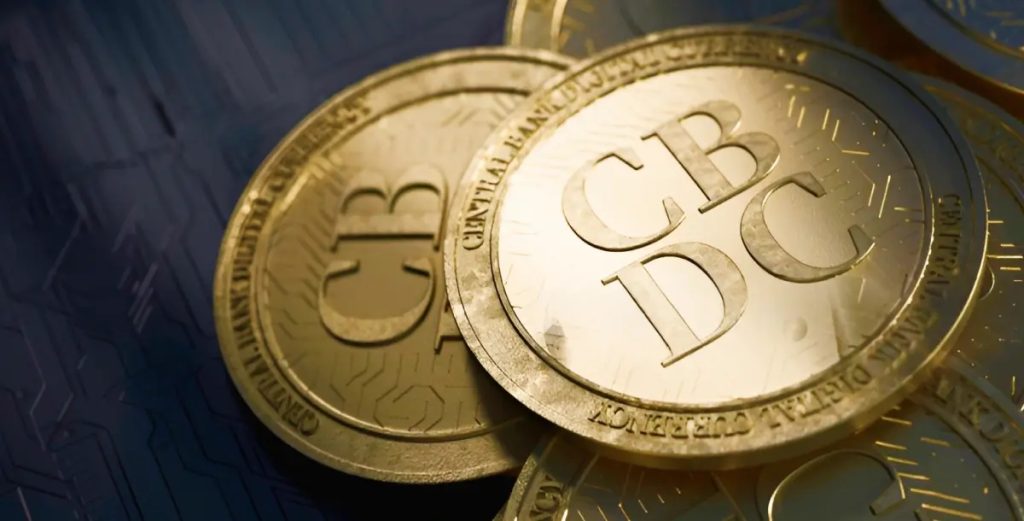Central Bank Digital Currencies (CBDCs) are approaching an inflection point in global finance. Unlike stablecoins—which are typically issued by private companies and backed by reserves—CBDCs represent sovereign digital cash: programmable, instantly settled, and backed by central banks.
As of June 2025, more than 130 countries—representing over 95% of global GDP—are exploring or piloting CBDC initiatives. China’s e-CNY continues to lead large-scale public trials, the European Central Bank is finalizing the digital euro’s design, and the U.S. Federal Reserve is deep in consultation on the future of a digital dollar.
This global momentum signals a structural shift: CBDCs are not just digital alternatives to cash—they are being positioned as core infrastructure for next-generation financial systems. When paired with the rapid tokenization of real-world assets, CBDCs have the potential to eliminate long-standing frictions in settlement, interoperability, compliance, and liquidity—paving the way for a more efficient, inclusive, and programmable financial future.
CBDCs as Native On-Chain Settlement Assets
Today, one of the biggest operational bottlenecks in tokenized finance is the lack of a stable, regulated, interoperable settlement asset.
While stablecoins like USDT and USDC currently dominate tokenized markets, they introduce friction:
- Counterparty risk (centralized issuers)
- Legal uncertainty (regulatory classification varies)
- Limited integration into national payment rails
CBDCs could change that.
With central banks issuing state-backed, programmable, fiat-equivalent tokens, tokenized asset platforms would gain:
- Final settlement with no intermediaries
- 24/7/365 availability without relying on banking hours
- Reduced clearing and reconciliation costs
- Automated compliance at the protocol level
In this context, CBDCs address real-world business challenges that have long constrained the tokenized asset market and unlocks operational efficiency. As tokenized markets mature, the ability to settle in central bank money—instantly and securely—will redefine how value moves across digital ecosystems.
Enhanced Liquidity and Institutional Participation
CBDCs won’t automatically create demand for tokenized assets—but they can provide the infrastructure that makes deeper institutional participation possible. By offering a state-backed, programmable, and interoperable payment rail, CBDCs reduce friction for market entry and transaction settlement—particularly for institutions bound by strict compliance and operational standards.
When CBDCs are integrated into trading and settlement infrastructure, they can enable more participants to confidently engage in tokenized markets, including:
- Regulated banks managing digital treasury operations
- Fintechs building compliant, cross-border payment layers
- Sovereign entities or public funds transacting in on-chain environments
In this way, CBDCs serve as a high-trust channel—not a direct source of liquidity, but a catalyst that fosters market depth by making participation safer and more efficient.
As more regulated actors explore digital asset markets, one critical factor becomes central: regulatory clarity. And this is where CBDCs can offer some of their most strategic value—by embedding compliance directly into the transaction layer.
Regulatory Alignment and Risk Reduction
One of the main concerns with tokenized asset infrastructure is compliance—particularly in terms of KYC, AML, capital requirements, and auditability.
CBDCs bring built-in regulatory alignment:
- They are state-issued and often designed with embedded KYC/AML modules
- They can limit wallet usage based on identity or permissions
- They provide central bank visibility while preserving user privacy via programmable controls
This makes them attractive for regulated institutions, which can transact with reduced legal ambiguity—especially when compared to third-party stablecoins or synthetic cash equivalents.
Strategic Implications for Tokenized Platforms and Custodians
To prepare for a CBDC-enabled future, tokenized asset platforms, custodians, and financial institutions must:
- Integrate CBDC rails where available: Collaborate with national pilots and central banks to build settlement and custody models with CBDCs as core components.
- Build multi-settlement-layer support: Ensure platforms can operate across CBDCs, stablecoins, and synthetic currencies seamlessly.
- Adapt smart contracts for programmable money: Upgrade token logic to support CBDC-specific compliance rules and logic (e.g. transfer limits, KYC gating, spending conditions).
ChainUp’s Position: Future-Proofing Tokenized Infrastructure
By offering regulated, interoperable, and programmable settlement rails, CBDCs could eliminate some of the biggest bottlenecks in tokenized finance: slow clearing, limited banking access, and settlement risk.
But success won’t be automatic. Businesses must proactively adapt, ensuring their infrastructure can work with—and not against—the evolving standards of programmable sovereign money.
Ready to Build Tokenized Infrastructure with CBDC Readiness?
ChainUp’s tokenization suite transforms how regulated institutions unlock new market potential and access unprecedented liquidity. Delivering flexible, future-ready infrastructure, ChainUp’s Tokenization solution is engineered to ensure platforms not only grow but gain competitive edge.
Book a consultation or request a private demo today. Let us show you how to prepare your platform for the programmable money era.




